By Christopher Miskimon
Young Winston Churchill expected to enter battle on September 1, 1898, but instead he watched as British gunboats bombarded Dervish forts. Attached to the 21st Lancers, he stood on a nearby ridge as the gunboats steamed relentlessly forward against the river current. Enemy shot splashed around them from 50 guns manned by Mahdists in the forts. The better trained British gunners soon smashed the enemy gun embrasures with their highly accurate fire. Many of their guns were blown from their carriages. After destroying the enemy artillery, British Maxim machine gunners cleared the trenches around the forts. It was a thrilling sight, but Churchill awaited his chance for action.
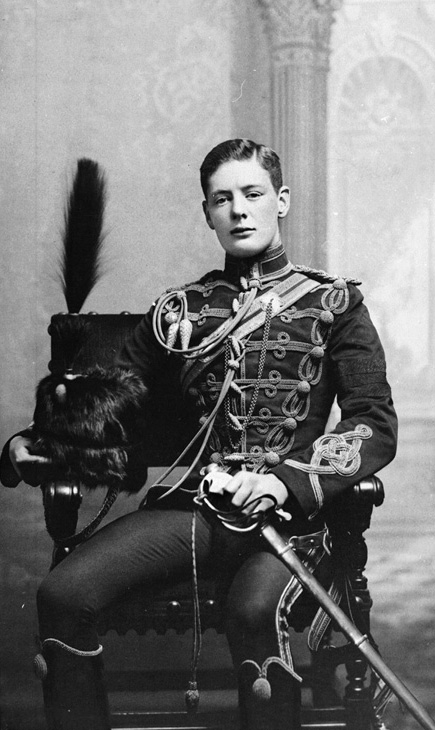
He got that opportunity the following day during the Battle of Omdurman, Great Britain’s decisive victory over the Mahdist army in the Sudan. The 21st Lancers charged a group of Dervish troops, wheeling right into line at the bugler’s call and charging headlong toward the enemy mass. Churchill, who was a trained cavalryman, hoped the British horsemen would charge headlong into the enemy formation and shatter it. Instead, at the last moment “they all fell (arse over tip) and we passed through without any sort of shock,” he wrote.
After riding through the Dervish formation, the cavalrymen found themselves embroiled in isolated melees. During one such melee, Churchill fired the 10 rounds in his Mauser pistol. He estimated that he killed three enemy soldiers. A Dervish lunged at him with a sword in an effort to hamstring his horse, but Churchill turned his horse away from the danger. He knew that as long as he stayed armed and atop his horse he could keep the enemy at bay. But if he or his horse was wounded, or if he was disarmed, the Dervishes would kill him. When he saw two Dervishes aim their rifles at him, Churchill galloped off to reunite with his squadron.
Churchill realized he did not even have a scratch, nor did his horse. It was “the most dangerous two minutes I shall live to see,” he wrote. He wanted to lead his troopers back into battle, but his squadron was ordered to dismount and fire at the enemy. After the British victory Churchill wrote that he was glad to have experienced a cavalry charge. It was the last one the British Army ever carried out and it was of little purpose for the British could have engaged the enemy as a safe distance by rifle. One historian later noted the charge of the 21st Lancers was comparable to the Charge of the Light Brigade in that “the most futile and inefficient part of the battle was the most extravagantly praised.”
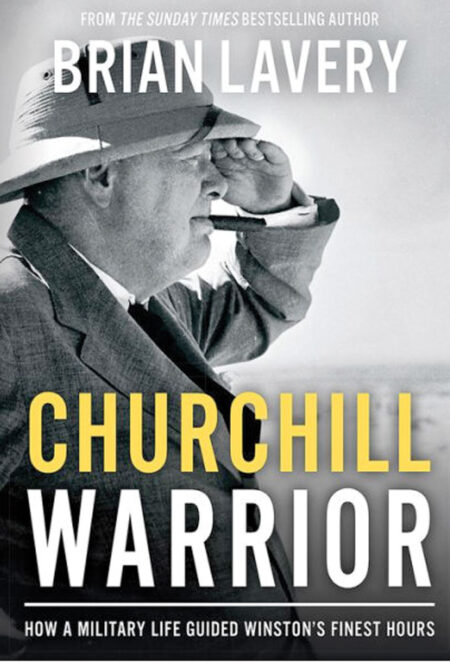 The Battle of Omdurman was a formative experience for Churchill who four decades later would go on to lead his nation through the darkest time in its history. The time Winston spent soldiering taught him valuable lessons about strategy and warfare. These experiences are deftly gathered and retold in Churchill Warrior: How a Military Life Guided Winston’s Finest Hours (Brian Lavery, Casemate Publishers, Havertown, PA, 2017, 448 pp., maps, photographs, notes, bibliography, index $32.95, hardcover). The new work affords a thorough analysis and history of Winston Churchill the soldier and how he applied it to lead Great Britain to victory in World War II.
The Battle of Omdurman was a formative experience for Churchill who four decades later would go on to lead his nation through the darkest time in its history. The time Winston spent soldiering taught him valuable lessons about strategy and warfare. These experiences are deftly gathered and retold in Churchill Warrior: How a Military Life Guided Winston’s Finest Hours (Brian Lavery, Casemate Publishers, Havertown, PA, 2017, 448 pp., maps, photographs, notes, bibliography, index $32.95, hardcover). The new work affords a thorough analysis and history of Winston Churchill the soldier and how he applied it to lead Great Britain to victory in World War II.
The author investigates how Churchill gained his knowledge of strategy and tactics as well as administration. During the intervening years he developed a keen understanding of new weapons and technologies and of the concept of combined arms operations. The author covers all of these aspects in great detail, illustrating them with many compelling anecdotes. The author uses Churchill’s writings to back up his assertions.
The result is a fascinating look at one of history’s greatest wartime leaders through a new lens. That lens is Churchill’s military life where he learned the uncompromising, hands-on style he used to help steer Great Britain as the First Lord of the Admiralty during World War I and as prime minister during World War II. He and the British people faced their greatest test in the latter conflict and emerged triumphant.
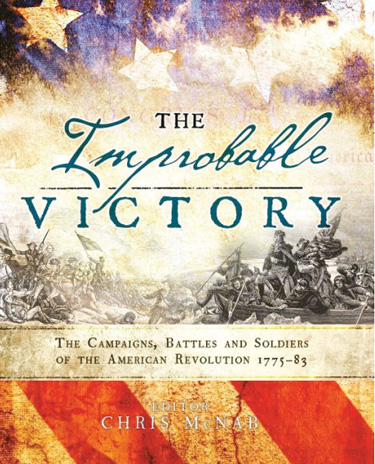 The Improbable Victory: The Campaigns, Battles and Soldiers of the American Revolution 1775-83 (Edited by Chris McNab, Osprey Publishing, Oxford, UK, 2017, 260 pp., maps, photographs, bibliography, index, $35.00, hardcover)
The Improbable Victory: The Campaigns, Battles and Soldiers of the American Revolution 1775-83 (Edited by Chris McNab, Osprey Publishing, Oxford, UK, 2017, 260 pp., maps, photographs, bibliography, index, $35.00, hardcover)
By any reasonable estimate, the American Revolution should have failed. There was no real army or navy, and the British possessed a military that had few equals in the world. It was a long, bloody struggle full of failures and successes on both sides. The conflict was also part of a global conflagration against England by a number of its foes. Despite all this, it was a war the fledgling United States was able to win through determination and perseverance. It was the America’s first step on its way to becoming a world power a century later.
Many of the events of this war have become legends to the American people. While stirring and inspirational, some of the events are not true. Many books have been written about the conflict, but this one stands out for the way in which it tells the whole story with balance and detail. The author effectively brings the conflict into its proper place within the larger scope of world events at the time.
The work is liberally illustrated with both period images and color artwork from notable modern artists, such as Steve Noon and Don Troiani. The layout is practical and pleasing to the eye. As with all of Osprey’s books, the work includes a large number of superb maps.
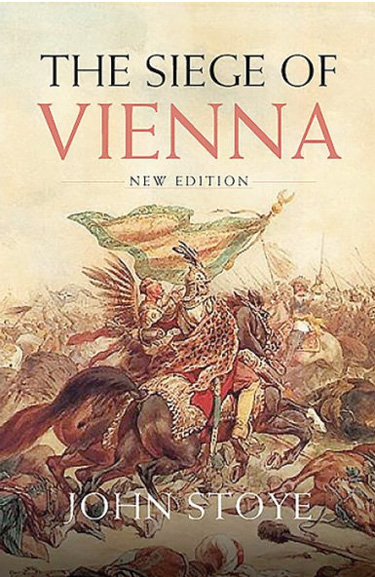 The Siege of Vienna (John Stoye, Birlinn Limited, Edinburgh, UK, 2017, 320 pp., maps, photographs, notes, index, $12.99, softcover)
The Siege of Vienna (John Stoye, Birlinn Limited, Edinburgh, UK, 2017, 320 pp., maps, photographs, notes, index, $12.99, softcover)
An Ottoman army laid siege to the city of Vienna in 1683. It was an enormous threat to Western Christendom. Indeed, the threat was so great that the Christian powers laid aside their petty squabbles and united against the growing Islamic threat in Eastern Europe.
The defeat of the Ottomans and their Tartar allies marked one of the great turning points in history. The vast empire of the Turks lost much of its territory and began the slow decline of succeeding centuries. The victorious Hapsburg Empire turned its attention from battling France and invading the Rhine region and instead focused on the newly available lands in the Balkans that the Hapsburgs would rule until World War I destroyed the status quo. This campaign set the stage for the Europe that would burst forth and take control of much of the world in the following decades.
This work by a late English scholar is full of rich detail, giving the reader a complete picture of this epic battle, one that covers the events that led up to the battle, as well as the battle itself. It provides the background leading up to the event, as well as information on the people, places, and events involved in the great siege. Last but not least, the author tells how the siege and its consequences influenced the development of Europe.
 Operation Banner: The British Army in Northern Ireland 1969-2007 (Nick van der Bijl, Pen and Sword Books, South Yorkshire, UK, 2017, 272 pp., maps, photographs, appendices, bibliography, index, $19.99, softcover)
Operation Banner: The British Army in Northern Ireland 1969-2007 (Nick van der Bijl, Pen and Sword Books, South Yorkshire, UK, 2017, 272 pp., maps, photographs, appendices, bibliography, index, $19.99, softcover)
On July 21, 1972, Belfast exploded. During a 90-minute period, a total of 22 bombs, some in cars and other in packages, detonated at various points across the city. Members of the Provisional Irish Republican Army set them off in retaliation for the breakdown of peace talks. The group alerted the local security forces every few minutes to a different bomb’s presence, but tragically they badly underestimated the security troops’ ability to effectively respond and clear the area. Nine people died and 130 were wounded. The incident became known as Bloody Friday and caused outrage on all sides. One local paper printed that the city had not seen such devastation since the Nazi Blitz of 1941. As a result, the British Army carried out Operation Motorman to force its opponents to either flee or fight.
The seesaw struggle went on for four decades. It was either a bitter counterterrorist fight or a struggle of desperate freedom fighters, depending on one’s outlook. The book covers in great detail the British Army’s operations during this time, including its contributions to the eventual peace. The author does a comprehensive job of covering the various operations. The work includes multiple appendices that offer a stunning array of facts and figures about the conflict.
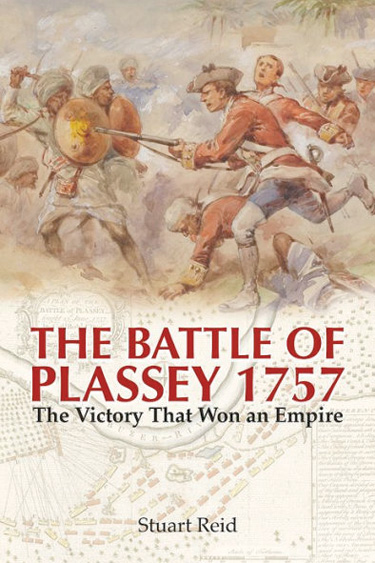 The Battle of Plassey 1757: The Victory That Won an Empire (Stuart Reid, Frontline Books, South Yorkshire, UK, 2017, 270 pp., maps, photographs, appendices, notes, bibliography, index, $39.95, hardcover)
The Battle of Plassey 1757: The Victory That Won an Empire (Stuart Reid, Frontline Books, South Yorkshire, UK, 2017, 270 pp., maps, photographs, appendices, notes, bibliography, index, $39.95, hardcover)
The Battle of Plassey was an amazing victory for the nascent British Empire. In the space of 40 minutes, 3,000 British and Sepoy troops soundly defeated an 18,000-strong Bengali-French army led by Nawab Siraj-ud-Daulah, the ruler of Bengal. The Nawab of Bengal wanted to drive the English from India. He turned to the French for help, but to no avail. The campaign leading up to the decisive battles was full of small-unit actions. They were fought by soldiers often led by ambitious but roguish men eager to make their names and fortunes in the Subcontinent. These victories led to all of India falling under British control within a century. It was also the beginning of a century of bloody conflict that eventually would spread to Afghanistan.
This work offers an in-depth look at a critical campaign largely from the point of view of the young captains and soldiers who fought it. The author makes liberal use of eyewitness accounts to bring out the action, weaving them effectively into the narrative. An excellent group of appendices gives detailed information on tactics and opposing forces.
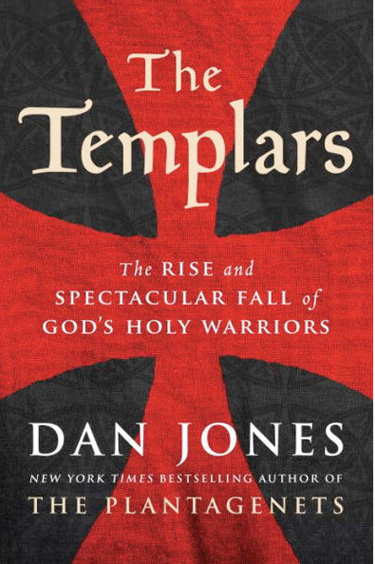 The Templars: The Rise and Spectacular Fall of God’s Holy Warriors (Dan Jones, Penguin Random House, New York, 2017, maps, illustrations, notes, bibliography, index, $30.00, hardcover)
The Templars: The Rise and Spectacular Fall of God’s Holy Warriors (Dan Jones, Penguin Random House, New York, 2017, maps, illustrations, notes, bibliography, index, $30.00, hardcover)
Each Templar wore a white tunic emblazoned with a red cross. It was a symbol not only of the blood Jesus Christ shed for humanity, but also the blood they were willing to spill in the service of God. The Latin Crusades in the Holy Land had given rise to them and many other religious orders, but the Templars were different. They had a broad popular appeal, despite also being kingmakers, financiers, tax collectors, and castle builders. The Templars began as an auxiliary force, but they soon became one of Christendom’s elite forces. Eventually their power grew to the point they became a threat to the established order of European life. This made their fall even more rapid than their meteoric rise. The legacy of the Knights Templar is that of one of the most famous, yet also one of the most controversial, of the military orders.
The author cuts through the myths that have arisen about them over the centuries and gets to the truth of what is known about them. The book is divided into four sections, highlighting a significant period of the Templars’ role: pilgrims, soldiers, bankers, and heretics. It is thoroughly researched with a brisk narrative.
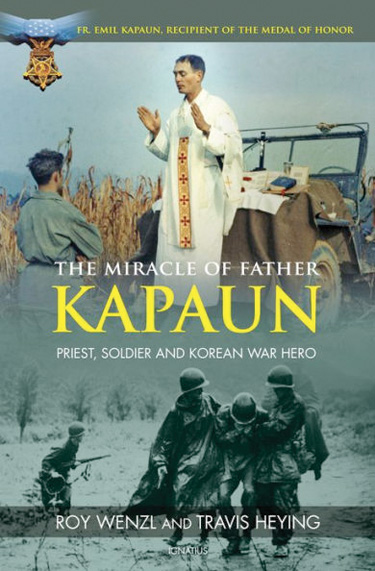 The Miracle of Father Kapaun: Priest, Soldier and Korean War Hero (Roy Wenzl and Travis Heying, Ignatious Press, San Francisco, CA, 2017, map, photographs, appendices, bibliography, index, $15.95, softcover)
The Miracle of Father Kapaun: Priest, Soldier and Korean War Hero (Roy Wenzl and Travis Heying, Ignatious Press, San Francisco, CA, 2017, map, photographs, appendices, bibliography, index, $15.95, softcover)
Father Emil Kapaun was a former Kansas farm boy who served as an Army chaplain in World War II. When the Korean War began he rejoined the Army to continue ministering to the soldiers fighting there. He was known for his energy and diligence. He refused to abandon his wounded men when he was captured. Marched off to a prisoner of war camp, he would spend a year in it before he succumbed to malnutrition and disease in March 1951
Before he died, he cared for the men in the camp, tending to the sick and doing everything in his power to lift their spirits. Father Kapaun would scrounge for food to feed them, argue calmly against the communist propaganda directed at them, and strive to help them maintain their faith under the harsh conditions of camp life. He gave away so much of his own food and clothing that many people believed he hastened his own death.
This new biography gives the reader a close look at a soldier who waged war through his love for his fellow Americans and unwavering support of them in their time of need. The book also discusses his nomination for sainthood. More than 8,000 documents concerning him have been turned over to the Vatican for their consideration.
The work is an inspiring tale of a man of God who led by example and never gave up in his duties to his faith or his flock.
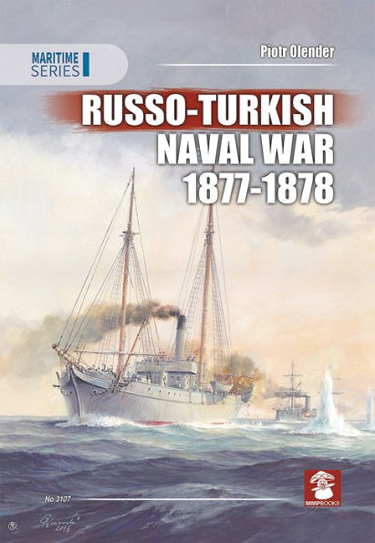 Russo-Turkish Naval War 1877-1878 (Piotr Olen-der, MMP Books/Casemate, Havertown, PA, 2017, maps, photographs, appendix, index, $49.00, softcover)
Russo-Turkish Naval War 1877-1878 (Piotr Olen-der, MMP Books/Casemate, Havertown, PA, 2017, maps, photographs, appendix, index, $49.00, softcover)
This conflict pitted the declining Ottoman Empire against an alliance of Eastern Orthodox nations, such as Bulgaria, Romania, Serbia, and Montenegro, which were led by Imperial Russia. For their part, the Balkan States exercised their increasing sense of nationalism. As for the Russians, they sought to regain territory they had lost during the Crimean War, as well as support the Balkan nations’ struggle to be free of the Ottomans.
It was a bitter war between religious adversaries. The naval portion involved a series of battles using ships both old and new and often in support of the various land campaigns. The book covers a war many Westerners are not aware existed.
The author covers the war in great detail. The work includes illustrations of the ships involved, as well as charts comparing the opposing navies.
 Back Over There: One American Time-Traveler, 100 Years Since the Great War, 500 Miles of Battle-Scarred French Countryside and Too Many Trenches, Shells, Legends and Ghosts to Count (Richard Rubin, St. Martin’s Press, New York, 2017, 304 pp., maps, photographs, appendix, bibliography, index, $27.99, hardcover)
Back Over There: One American Time-Traveler, 100 Years Since the Great War, 500 Miles of Battle-Scarred French Countryside and Too Many Trenches, Shells, Legends and Ghosts to Count (Richard Rubin, St. Martin’s Press, New York, 2017, 304 pp., maps, photographs, appendix, bibliography, index, $27.99, hardcover)
World War I was one of history’s most important conflicts, arguably the most important due to what it set in motion for the rest of the 20th century. While Europeans are still affected by the war’s results and generally acknowledge this, most Americans know relatively little about them and don’t have much interest in learning more.
To study the conflict, the author embarked on a journey across Europe. He retraces the steps of the American Expeditionary Force, walking through old trenches and tunnels, viewing graffiti from a century ago and finding veritable mountains of old and discarded artifacts, such as canteens and mess tins. During the course of his travels, he met many amateur historians and archaeologists who are devoted to preserving artifacts of the conflict. Much of what he found was documented in his writings for the New York Times. The full story is retold in this lively and moving work. It is an interesting combination of history and travel book created on the war’s actual battlefields.
 Why Vietnam Matters: An Eyewitness Account of Lessons Not Learned (Rufus Phillips, Naval Institute Press, Annapolis, MD, 2017, 448 pp., maps, photographs, notes, bibliography, index, $24.95, softcover)
Why Vietnam Matters: An Eyewitness Account of Lessons Not Learned (Rufus Phillips, Naval Institute Press, Annapolis, MD, 2017, 448 pp., maps, photographs, notes, bibliography, index, $24.95, softcover)
In 1951 the Cold War was in its infancy. The CIA was searching one of its favorite recruiting grounds, Yale University, when it found a young man named Rufus Phillips. Rufus joined the Agency and arrived in Saigon in August 1954, just after the French defeat at Dien Bien Phu.
Rufus was an energetic man and rose rapidly in the organization. Eight years later he joined the Foreign Service in the Department of Rural Affairs, drawn by President John F. Kennedy’s call to service. He returned to South Vietnam. Along the way he met made many friends who would one day play vital roles in the American defense establishment.
This book is part memoir and part history of America’s involvement in Vietnam. The author forcefully argues the America did not understand the war in which it became embroiled.
The book provides not only a detailed assessment of the war, but also a useful summary that encapsulates the various lessons learned from the conflict.
Short Bursts
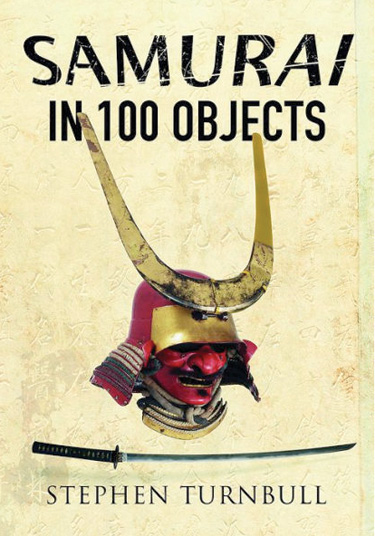 The Samurai in 100 Objects (Stephen Turnbull, Frontline Books, 2017, $24.95, softcover) A history of the famous Japanese warrior class is told through the various items they used during the centuries they were active. It is well-illustrated in full color.
The Samurai in 100 Objects (Stephen Turnbull, Frontline Books, 2017, $24.95, softcover) A history of the famous Japanese warrior class is told through the various items they used during the centuries they were active. It is well-illustrated in full color.
God’s Generals: The Military Lives of Moses, the Buddha and Muhammad (Richard A. Gabriel, Pen and Sword Books, 2017, $24.99, softcover) The founders of three of the world’s great religions also were accomplished field generals. This work examines their military achievements.
Eutaw Springs: The Final Battle of the American Revolution’s Southern Campaign (Robert Dunkerly and Irene Boland, University of South Carolina Press, 2017, $21.99, softcover) The Battle of Eutaw Springs was a microcosm of the American Revolution in the South. It was a desperate fight with inconclusive results, but it exemplifies the desperate combat that took place.
My Lai: Vietnam, 1968, and the Descent into Darkness (Howard Jones, Oxford University Press, 2017, $34.95, hardcover) The My Lai Massacre was one of the most significant events of the Vietnam War. It affected morale, political sentiment, and the outcome of the war.
World War I and America: Told by the Americans Who Lived It (A. Scott Berg, Library of America, 2017, $40.00, hardcover) This is a collection of firsthand accounts of the Great War. Some were written at the time while others are the result of interviews.
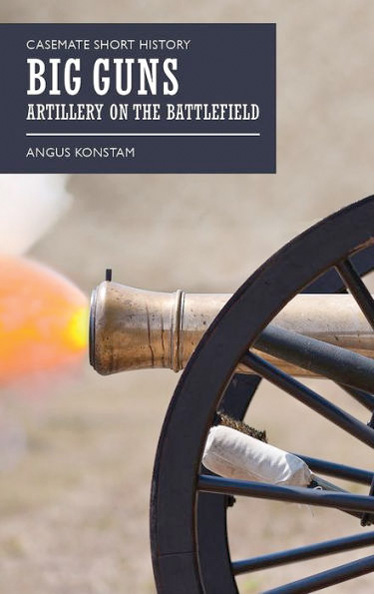 Big Guns: Artillery on the Battlefield (Angus Constam, Casemate Publishers, 2017, $12.95, softcover) Artillery has come to dominate the modern battlefield. This concise history covers the seven centuries since the invention of gunpowder.
Big Guns: Artillery on the Battlefield (Angus Constam, Casemate Publishers, 2017, $12.95, softcover) Artillery has come to dominate the modern battlefield. This concise history covers the seven centuries since the invention of gunpowder.
USS Constitution: A Midshipman’s Pocket Manual 1814 (Eric Clements, Osprey Publishing, 2017, $15.00, hardcover) This compilation gathers the information a new midshipman would need to serve aboard the early American warship. It also includes reports of the ship in action.
Treacherous Passage: Germany’s Secret Plot Against the United States in Mexico During World War I (Bill Mills, Potomac Books, 2017, $29.95, hardcover) America’s tacit alliance with Britain and France made it a target of German schemes for sabotage and even invasion. The author covers the full extent of this intrigue.
The Chosen Few: A Company of Paratroopers and Its Heroic Struggle to Survive in the Mountains of Afghanistan (Gregg Zoroya, Da Capo Books, 2017, $27.00, hardcover) A company of the 173rd Airborne spent 15 months fighting in Afghanistan. Its struggle culminated in the Battle of Wanat in July 2008.
In the Warlords’ Shadow: Special Operations Forces, the Afghans, and Their Fight Against the Taliban (Daniel R. Green, Naval Institute Press, 2017, $29.95, hardcover) This history shows how the American Special Forces adapted to the demands of fighting the Afghan insurgency.

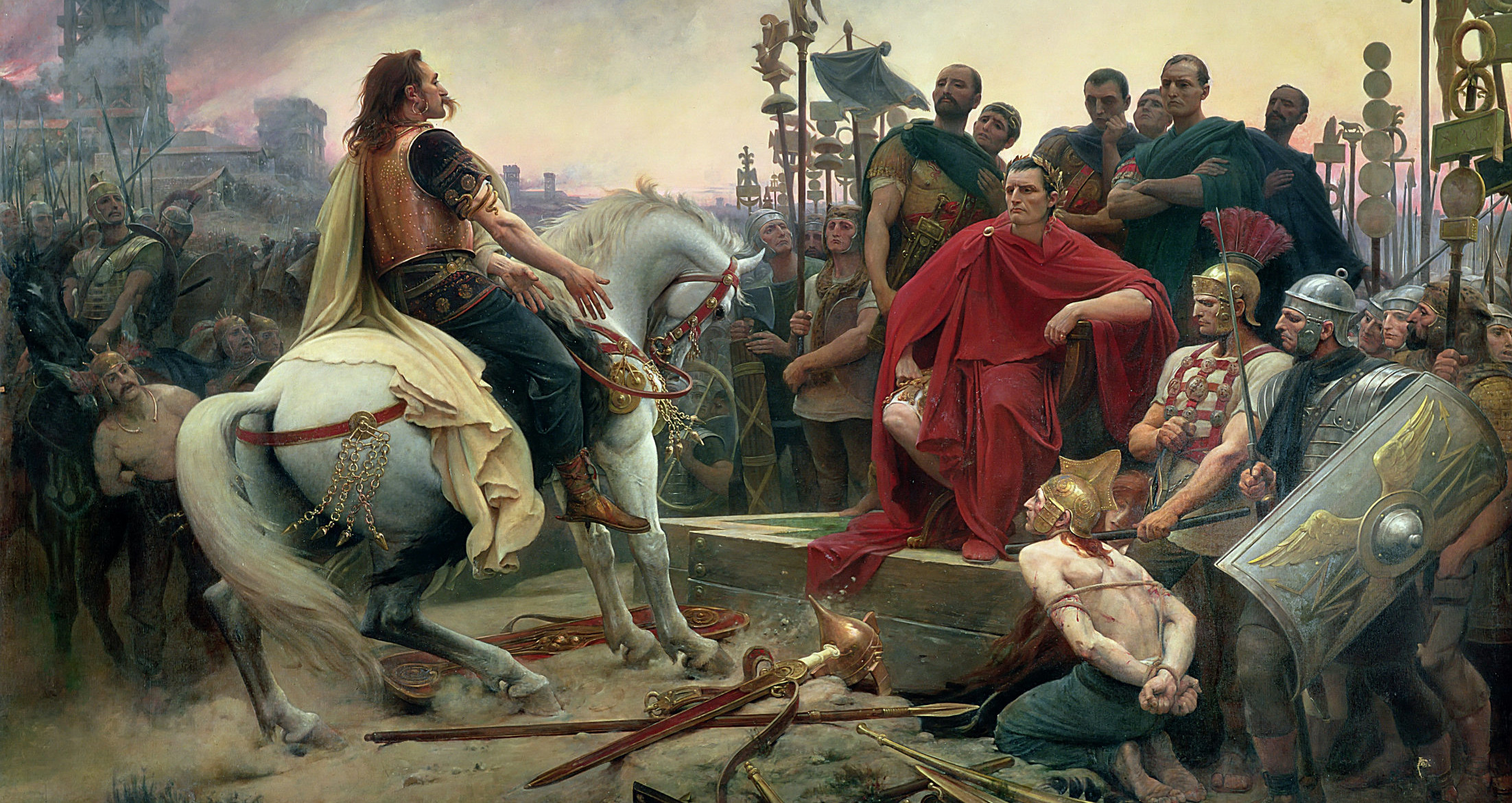
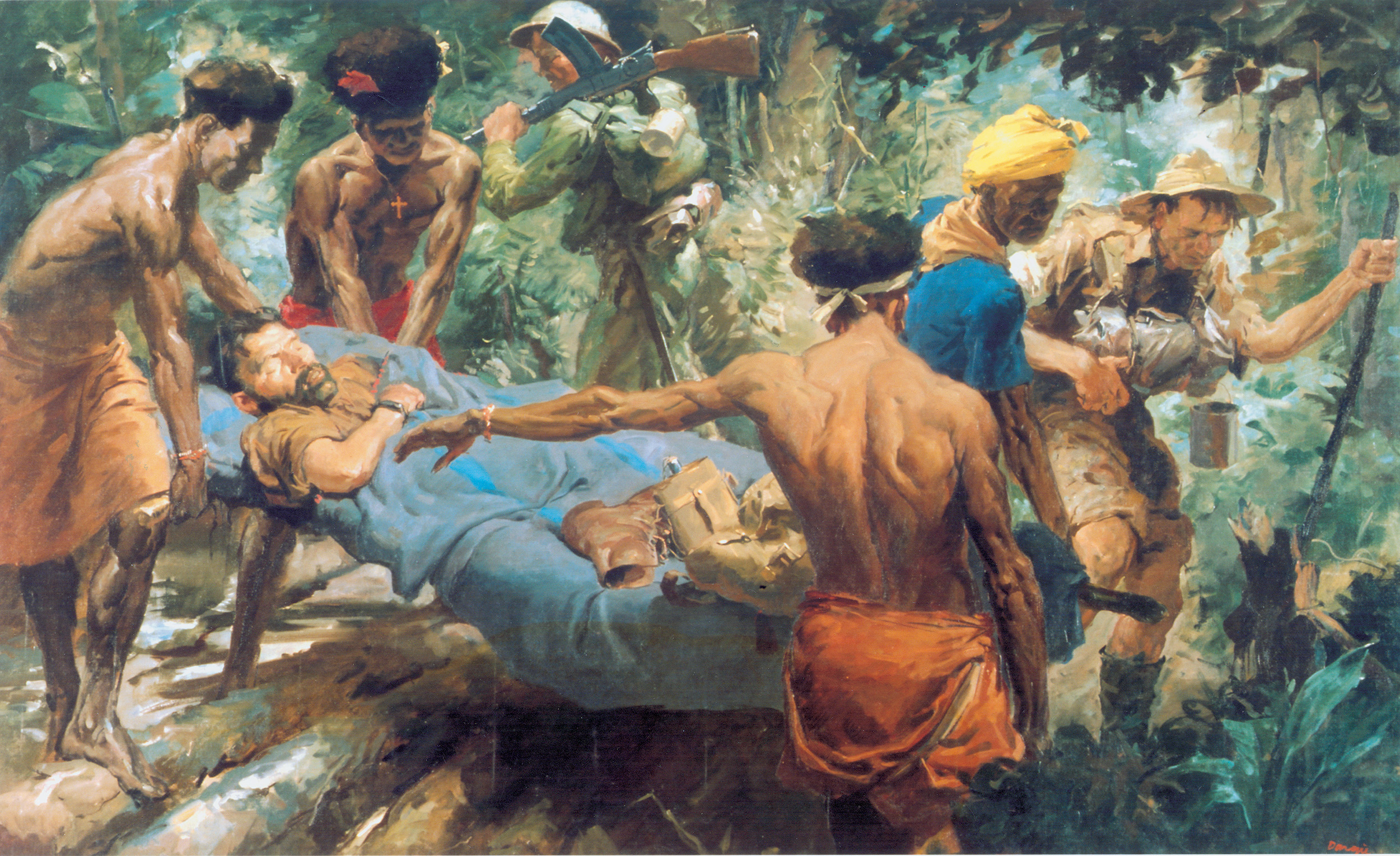
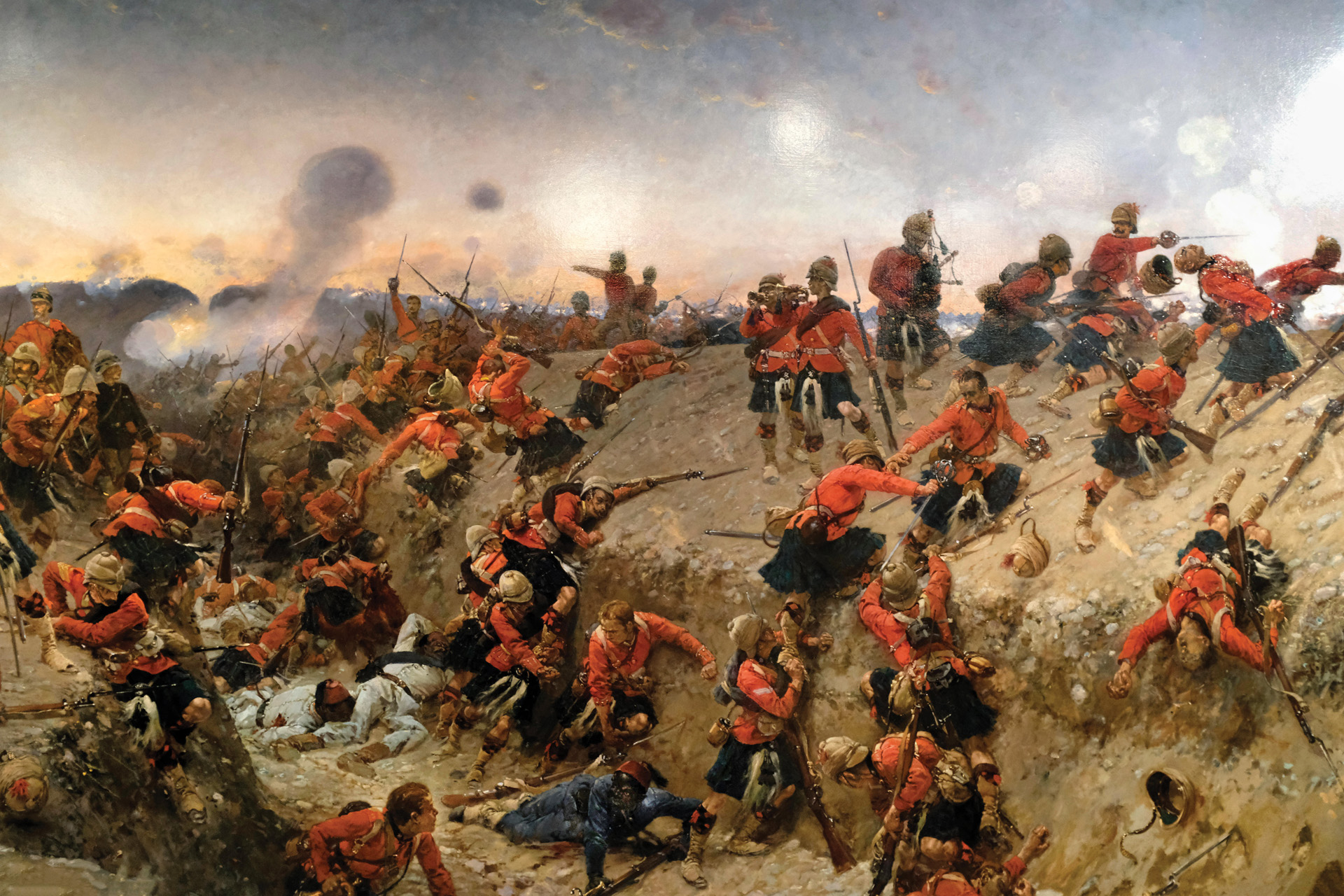
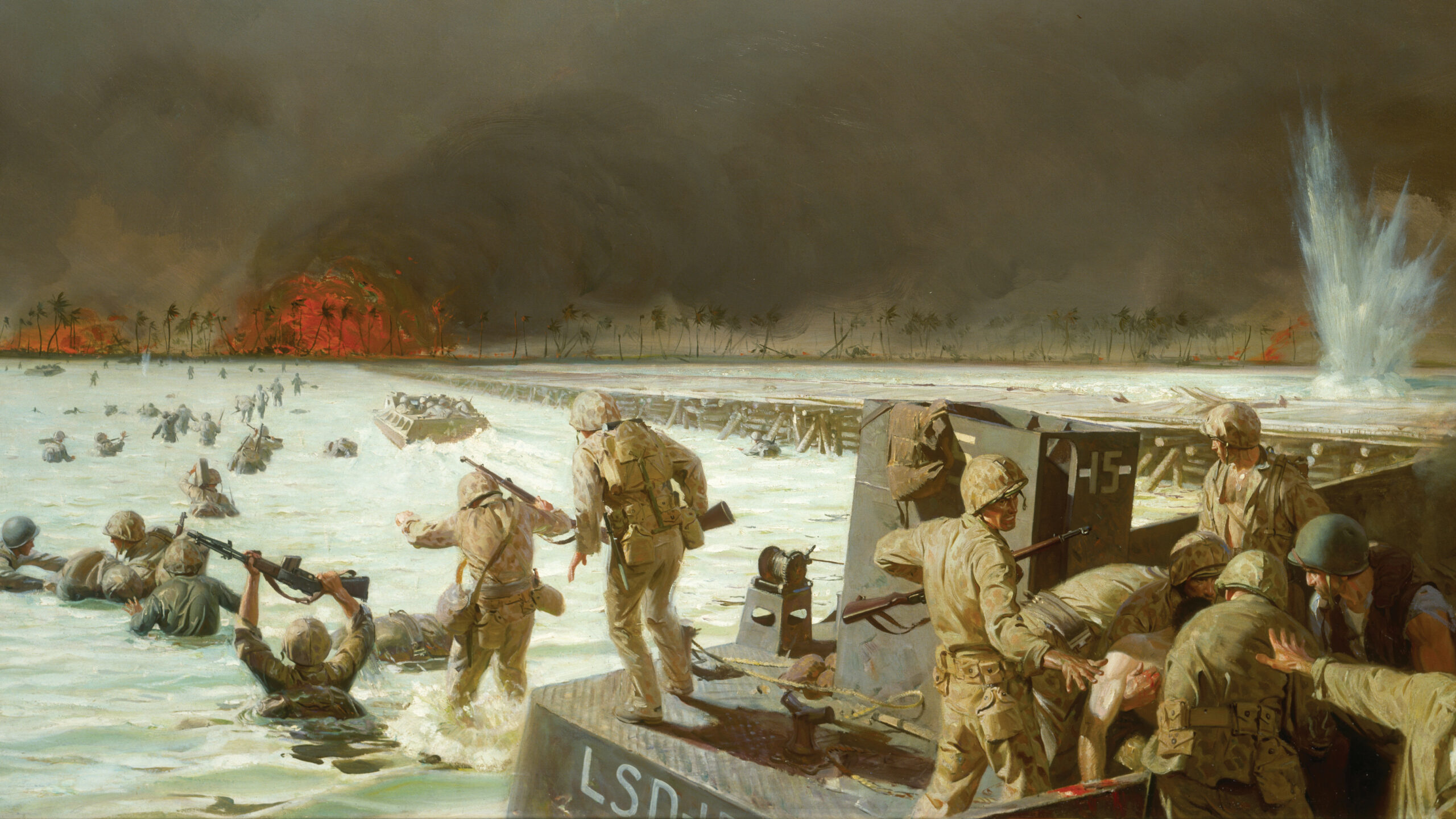
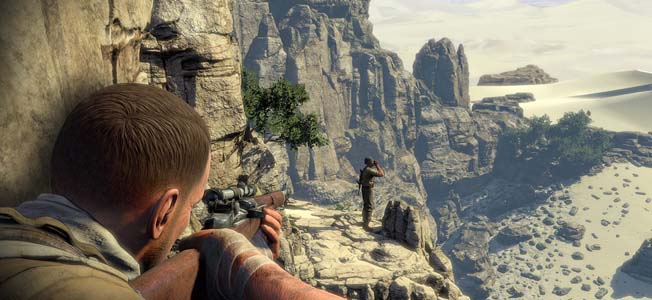
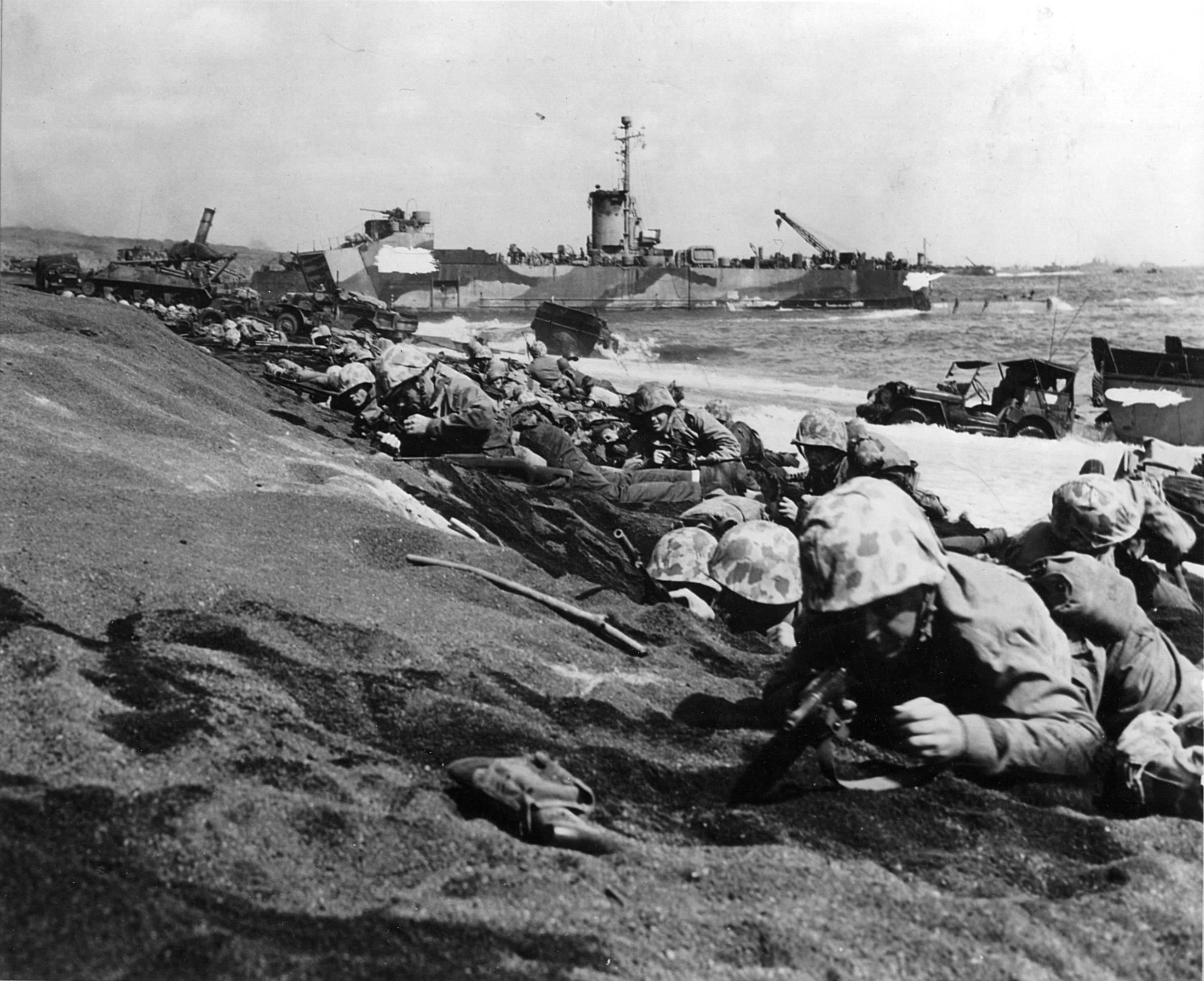
Join The Conversation
Comments